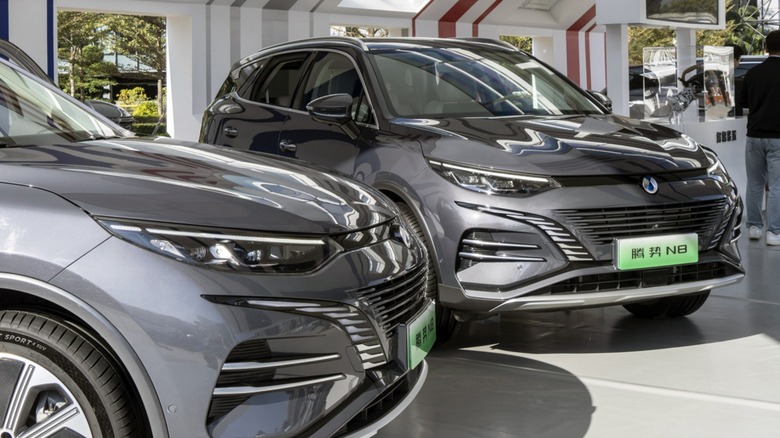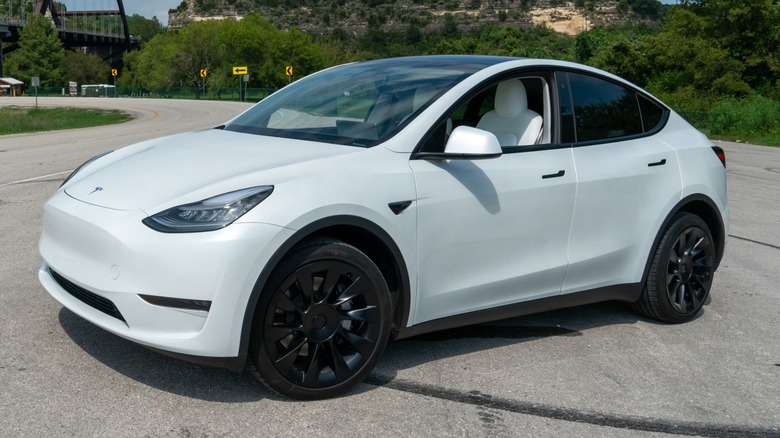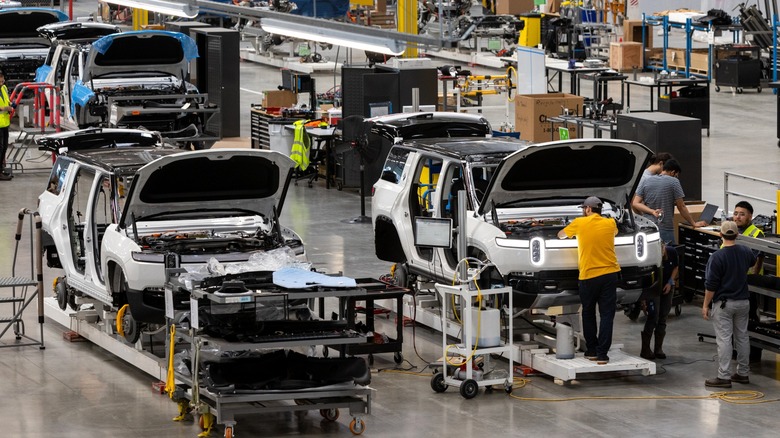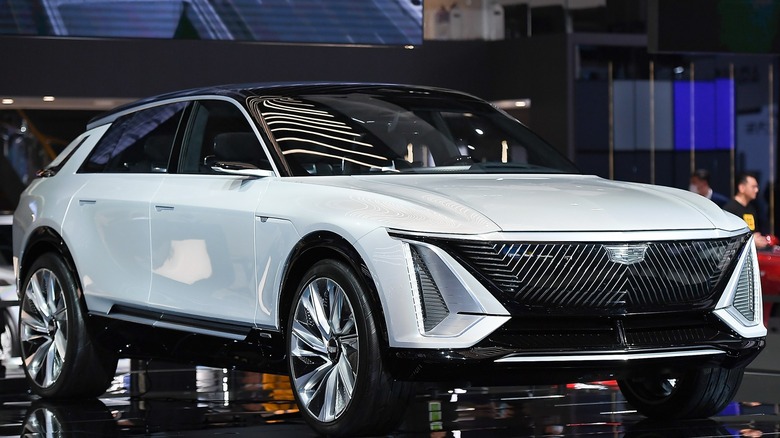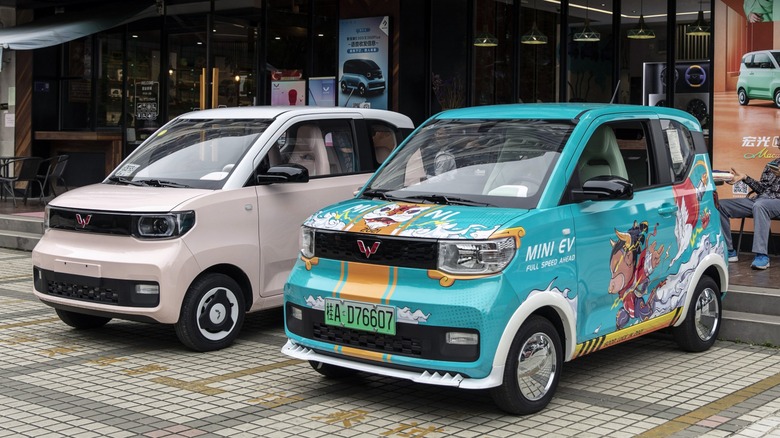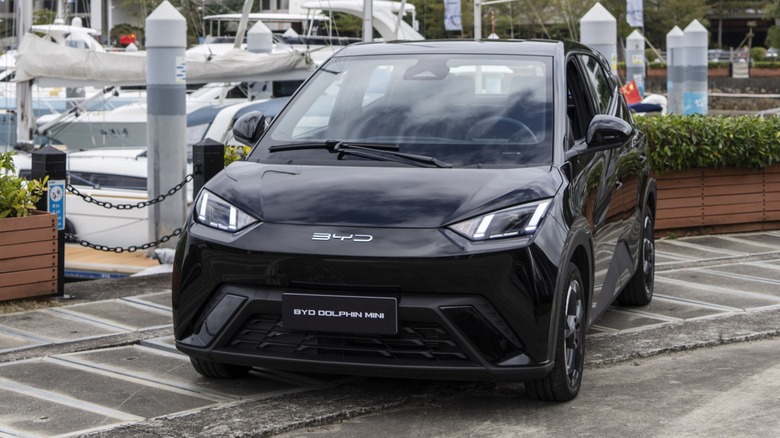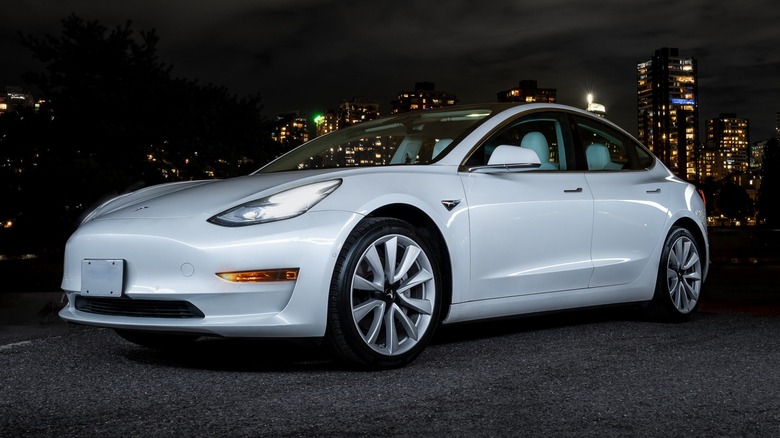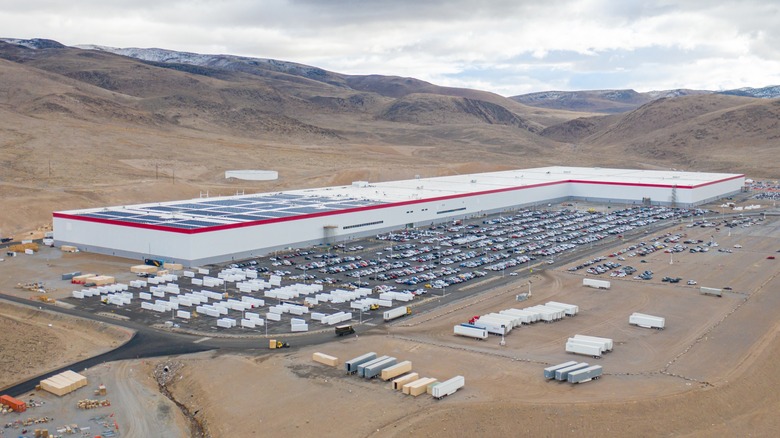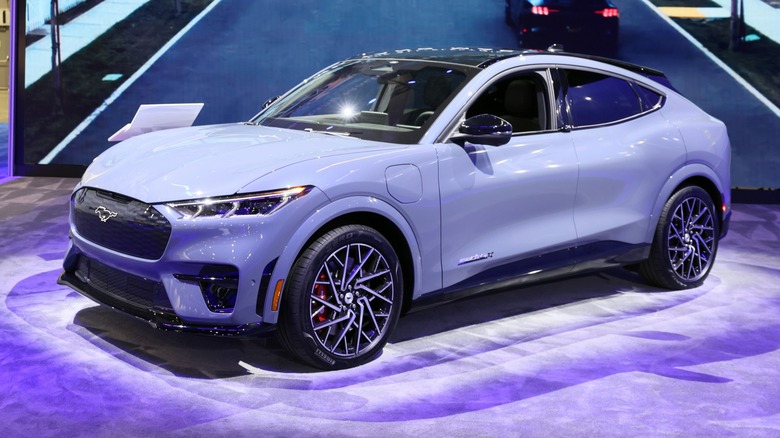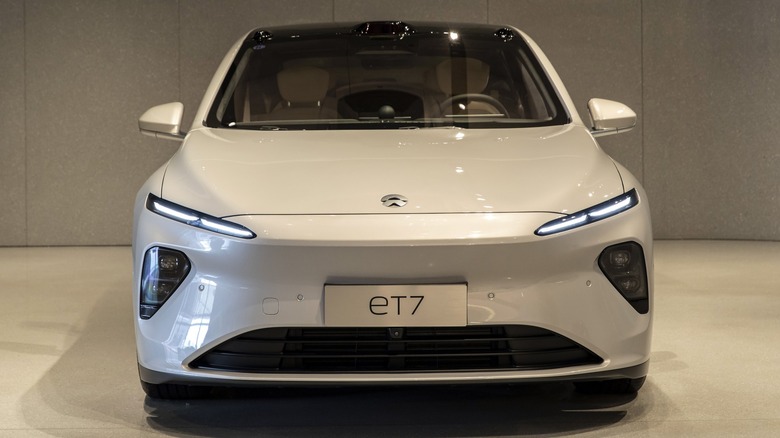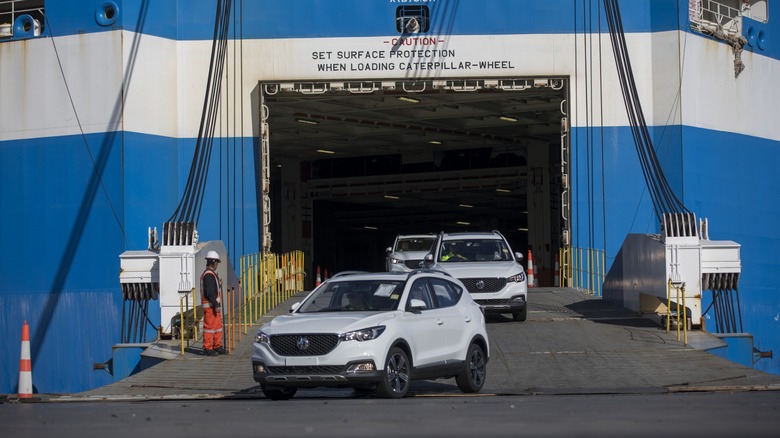Electric Vehicles In China: 10 Key Differences And Why It Matters For The U.S.
In January of 2024, The Guardian reported that Chinese automaker BYD surpassed American EV manufacturer Tesla in total sales of electric vehicles. Many reports of this spurred discussion about Chinese automakers and their role in the global marketplace and its explosive growth over the last couple of decades. Indeed, the news brought about much consternation regarding the effects of a wave of Chinese EVs flooding international markets and what it might mean for Western companies and their long-held global dominance, with concerns about control and supply of materials such as lithium required for battery production.
While you may have read the headlines, it is important to understand what this means and whether it is a concern at all. While the American auto industry sprang up at the tail end of the Industrial Revolution at the turn of the 20th century and has had more than a century to mature under a flourishing democratic political system, the Chinese auto industry sprang up from a largely impoverished country with no private car ownership and an authoritarian Communist political system, with the aid and investment of Western companies, to challenge the status quo in less than four decades.
With similar products coming from such disparate territories with vastly different cultural, regulatory, and historical conditions, there are bound to be significant differences in the finished products and their effects on society. While this topic could fill volumes, we will attempt to briefly share some of the key differences between the two manufacturing environments and why it matters for the United States.
How we got here
While EV manufacturing began in the United States in 1889, it was not until 2003 that an EV startup named after legendary physicist Nikola Tesla incorporated. Tesla Motors started small but persisted in growing its product and manufacturing abilities until its cars saw widespread adoption by customers and acceptance in the market. From the start, Tesla vehicles, which are all battery-only models, have targeted more affluent buyers. The development of Tesla technologies and the establishment of a nationwide charging network gained tremendous help from the United States government in the form of a $465 million loan in 2010 and the tax credits offered to buyers for years. This has led the company to a point where in 2023, Tesla sold 1.8 million EVs worldwide, according to Ars Technica.
The original business of BYD was battery production in the 1990s before moving into auto manufacturing in 2003. BYD acquired an existing automaker, establishing itself in the industry with traditional gasoline models; moderately priced full-electric and hybrid vehicles have made up most of its product mix. EV production started in 2008 after receiving a $230 million investment from Warren Buffet's Berkshire Hathaway. Furthermore, the Chinese government has played a heavy hand in getting BYD to its success – The New York Times reported that it provided $2.6 billion to BYD from 2008 to 2022. BYD's rapid growth led to its total sales of 3 million vehicles in 2023, of which 1.6 million were battery-only options, according to CNBC. One reason for this surge in sales is that BYD sells cars at a significantly lower price point than Tesla.
How EVs got here
China's auto industry before 2000 was dominated by joint ventures with Western manufacturers while domestic automakers lagged. As the country transitioned into a major player, the Chinese government sought to bring its domestic manufacturers to the forefront. However, it saw Western dominance of internal combustion and chose to invest in the nascent EV industry, providing broad incentives that influenced supply and demand. Financial subsidies to the tune of $29 billion went into EV production between 2009 and 2022. Additionally, huge contracts for public transit provided guaranteed demand on the other side of the equation. High levels of government involvement permeated this push toward EV dominance in China and continue today.
The American EV industry was more of a homegrown effort. While several small startups attempted to break into EV sales throughout the post-war period, none gained enough traction to be anything but a curiosity. GM and Toyota toyed with battery-powered cars in the late '90s, and the only thing to come from that was the highly successful Prius hybrid. With the founding of Tesla in 2003, the future was on the verge of being rewritten, but it would take many more years to get there. However, after the tenacious efforts of Tesla to forge a new path with electric power, EVs became a viable alternative to internal combustion to the point that all major manufacturers are now engaged in EV development. While the U.S. government is not directly involved in the way the Chinese government is, subsidies and credits from the Inflation Reduction Act and other policies have given a clear boost to it from the beginning.
High technology
Tesla's abundance of innovative features and cutting-edge technology are well known. Tesla's first innovative feature was the introduction of a mainstream mass-market electric car company, and since it debuted, many more innovations have occurred and electric automakers added to the roster. Among the novel features brought to market by Tesla, some that have been adopted more widely are large touchscreens, Autopilot, Sentry mode, the Supercharger and its network, using an app as key, over-the-air updates, and many more. Furthermore, other manufacturers in the American market are bringing interesting tech to market in both startups such as Rivian, and legacy automakers like Cadillac.
Automakers in China are producing competitive EVs with attractive features that blend sophisticated hardware and software into the user experience. The result is a dizzying list of tech-laden gadgets built into each car. Refrigerators, a 32-inch projection screen, AR projectors for the road, and driver assist are but a few coming in new and future models. A model with a fully swappable battery pack that takes only five minutes to change is already in service, and a couple of ultra-high-end luxury and supercar electric models are coming soon. However, domestic Chinese chip production and advanced software lag behind that of the West, and recent American technology export restrictions could further hamper efforts to keep up.
It is clear that parallel industries are advancing on both sides of the Pacific. Whether they will converge is as yet unknown.
Imports and exports
Sales of American cars in China, which have been dominant in the market for years, have declined sharply over the last few years. Domestic Chinese EV production has risen in both quantity and quality while taking an increasing share of the market. Business Insider reported that GM's sales fell by 20% and Ford's by 33.5% in 2021. As of 2023, only Tesla avoided such declines. Something to consider is what is selling in China. While the Tesla Model 3 sells well in the country, it cannot compare with how many Wuling Hong Guang Mini EVs are sold. But that car is priced at $4,500 and is a tiny, electrified box on wheels with only a 100-mile range. It might be the most popular, but that does not mean it compares.
Chinese EVs are not yet selling in the United States, but that situation may not hold for long. Chinese automaker Nio plans to sell Chinese-made EVs in 2025, despite the high tariffs and inability to qualify for the $7,500 tax credit. Other Chinese brands have already infiltrated the Mexican market and are considering plans to set up factories in Mexico that could produce cars enjoying free trade protection to be exported north without tariffs.
The road from China to America, even via Mexico, is fraught, and massive speed bumps abound. While the quality of Chinese vehicles has improved quantifiably, it retains a perception in the States that will be hard to overcome. Political tension playing out in the public sphere also plays a role.
Build quality
While American cars of the past have suffered from poor build quality, things have improved dramatically in the modern day. This extends to the latest EVs, which mostly pair good construction with impressive specifications. There are some ups and downs when evaluating the latest American market EVs, but it is not hard to find some particularly bright spots. For example, Tesla models, per Consumer Reports, continue to show that Tesla is still grappling with overall build quality, but that the drivetrains are robust and dependable. However, EVs in general are experiencing more problems than conventional vehicles, and hybrids might be a more sensible choice for buyers looking for improved efficiency and reduced emissions.
With the flood of cheap Chinese products of abysmal quality coming into the country for the last 30 years, their cars will have to work double time to prove themselves. Americans might be fine spending $20 on a cheap toaster that won't be around for long, but the tens of thousands spent on an automobile is something else. Interestingly, a search for "Chinese EV quality" on YouTube returns many videos warning of big problems buyers are experiencing with them, including videos showing multiple spontaneous battery explosions. Conversely, professional auto journalists such as Top Gear have reviewed BYD models, resulting in a mostly positive impression that nonetheless hinted that improvement is still needed to compete with established brands. Until China's brands have established history, we cannot know the long-term viability of their products. Sadly, it may be too late for potentially unlucky owners.
Product value
Without a presence in the American market, comparisons may be hard to come by, but the influx of Chinese cars to Europe provides a meaningful example. To discover whether a new Chinese EV represents good value compared to an established American brand, we can look at a new Tesla Model 3 and a new BYD Seal, which appears to be targeted at Model 3 buyers. Both cars are approximately the same size and designed in a similar shape. Both are available with single or dual motors and the lower model BYD provides more range while the Tesla Model 3 Long Range beats the BYD Seal Excellence, their higher trim level. The BYD offers slightly more power while the Model 3 is capable of faster charging.
Although there are variations, the cars are competitively matched. In Europe, the Model 3 starts at €42,490 while the retail price of the Seal begins at €46,890. Will buyers spend $4,000 more for a car that provides a very similar experience from a Chinese automaker new to the market when an established American option exists? Also, this does not factor in the little annoyances that have not yet been discovered, whether interior panels come loose at 50,000 miles or software glitches arise later and support is not available. For the moment, it appears the established American option is the safer bet, but the Chinese option does not represent the same value as Chinese consumer goods of the past.
Globalized sales and production
American EV production is largely localized, and domestic and foreign automakers have built assembly plants all over the country. EV production is underway for BMW in South Carolina, Stellantis in Kokomo, Indiana, and GM near Detroit, and Tesla is building cars in California, Texas, and Nevada. Tesla also manufactures in Germany and China while other American companies appear to be concentrating on the home market for now.
Chinese companies are definitely thinking globally. BYD, for example, is already on the expansion fast track. The vast majority of its cars are sold domestically, but it has already moved into markets everywhere from the Middle East, Australia, and Southeast Asia to Europe, the fastest-growing EV market in the world. To cope with the growth, BYD is moving forward building production centers in Thailand, Hungary, Brazil, and Indonesia. The company is seriously studying Mexico to take advantage of the USMCA free trade agreement. While BYD is the largest, others such as Nio, Li Auto, and Xpeng are pushing hard into foreign markets and can be found in countries from Jordan to Kazakhstan.
American automakers have done the opposite. Fewer American cars are found in Europe these days, and Ford and GM both ended Australian manufacturing. Ford left India in 2022, and its presence in Europe has been heavily scaled back recently. Together, these changes create a rare opportunity for Chinese automakers. The Americans have left global markets wide open for the Chinese to move into, and they are arriving in full force.
American EV future
If you simply skim the headlines, you might have the impression that the automotive electrification project is stumbling and may not work out. However, if you dig deeper, you will discover the state of an industry that has a solid foundation with plenty of growth potential. 2023 was a banner year in the United States for EV sales, with between 1.3 and 1.4 million units sold. The rate of adoption indeed lags far behind the 35 percent of Germany or the unbelievable 90 percent of Norway, but the bottom is not getting ready to fall out.
As the industry matures, it will feel some growing pains. While demand remains high, there is a glut in the middle of the market, and the availability of affordable models needs to rise sharply. EV sales in the United States made up just 7.6 percent of the market but incentives from the Inflation Reduction Act are expected to get this percentage to rise to 28% by 2026, according to pv magazine. This includes incentives for buyers who will also benefit from expanded charging infrastructure, while the government is expanding its fleet of EVs.
High demand and record sales in 2023 should give automakers something to celebrate, as well as recent reductions in lithium prices and the stabilizing of the rate of inflation. The American EV market shall see good days ahead but looks to remain a localized phenomenon for now. The impact of Chinese cars on the American market depends on whether or not they can find an export path over the border.
Chinese EV future
The profound effort of the Chinese government to establish an EV industry that is competitive, not just at home but also abroad, is quickly taking root. A decade ago, BYD was largely unknown outside of China and today it is setting sales records rivaling American firms. As Chinese companies seek market share abroad, perceptions about quality will be a problem in the most industrialized nations. However, even in China, American cars are no longer dominant and, with their premium prices, are no longer seen as a value proposition compared to domestic options. The one exception to the rule is Tesla, which continues to see good sales in the country.
The influx of Chinese EVs is already cause for concern in Europe, where import restrictions and tariffs are nowhere near as punishing as in the United States. There are historical corollaries to when Japanese and Korean cars began showing up in Western ports en masse, but the difference is that those cars came from Western allies, while the Chinese relationship is often more adversarial. In October 2023, the European Union initiated a probe into Chinese vehicle imports related to the government subsidies propping up the manufacturers out of concerns raised about unfair competition from Chinese subsidies.
EVs from China appear to be a growing fact of life worldwide. They have pushed into developing countries and are gaining acceptance in Europe and Australia. Americans are already buying Chinese-made Polestars, Lincolns, and Buicks, and it feels like a matter of time before we see Chinese brands too.
Are we ready?
Since the quality of Chinese cars appears to have vastly improved, and the design and features are definitely comparable to Western-built vehicles, the idea of a BYD or XPeng dealer on Memorial Drive does not sound all too bad. Yet, there are several areas of potential underlying troubles not seen in the polished videos of auto journalists playing with a giant touchscreen in a BYD. The Senate recently grilled American auto executives about the presence of Chinese materials or components in their supply lines that had been produced by forced labor. In 2022, BYD cut production due to overwhelming pollution in Hunan, amid claims it caused nosebleeds in children. Chinese cities have some of the dirtiest air on the planet and imported cars from China contribute to that situation.
In addition to the environmental impact, China is a single-party authoritarian Communist state. Freedom of expression is not allowed and respect for people's human rights is negligible. Furthermore, the Chinese Communist Party is entwined with private business at all levels. This can have unintended effects on business transactions, causing them to become politically sensitive without warning. Furthermore, espionage by China is an ever-present threat that could be lurking behind any business partner without warning.
Whether we will soon see Chinese EVs remains to be seen. Regardless, it is an endeavor that should be entered into with extreme caution, and without significant changes in politics, American BYD dealers are a very long way off. Additionally, our financial support is best given to free people in an open society whenever possible.
